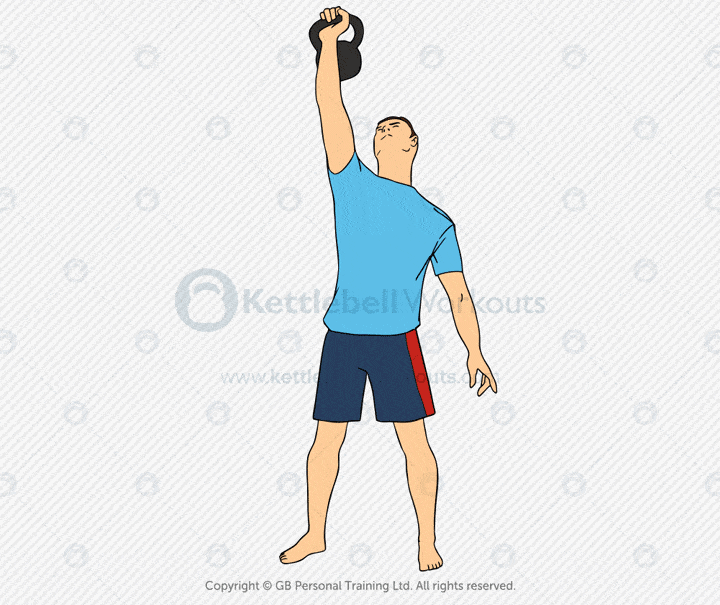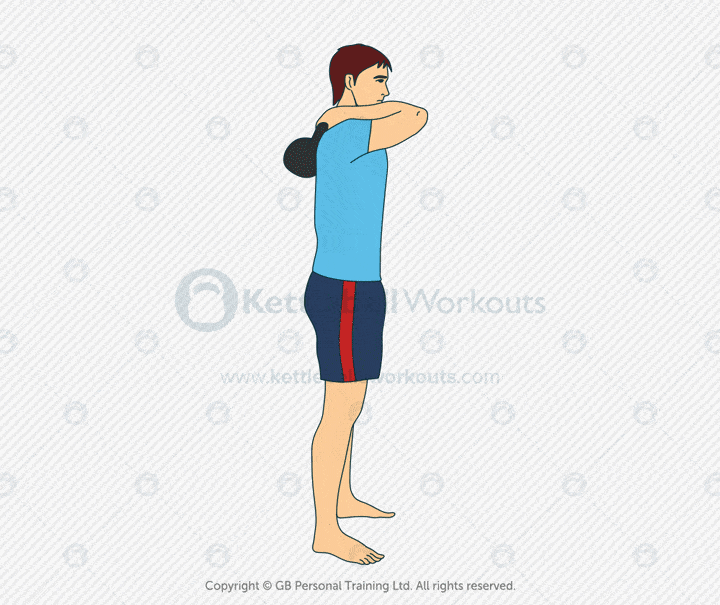Last Updated on 29 July 2025 by Greg Brookes
If you want a workout that builds strength, mobility, coordination, and conditioning all in one seamless session, kettlebell flows are your answer. They’ve become a core part of my programming, especially for clients who want to move better, build resilience, and keep their training fresh and enjoyable.
In this guide, I’ll explain exactly what kettlebell flows are, how they differ from complexes, how to progress them intelligently, and share three sample flows to integrate into your training today.
What Is a Kettlebell Flow Workout
A kettlebell flow is a sequence of exercises performed fluidly back-to-back without putting the kettlebell down. Each movement transitions seamlessly into the next, creating a continuous, integrated workout.
Flows differ from traditional complexes:
- Complexes: perform multiple reps of one exercise before switching
- Flows: typically perform one rep per exercise, linking movements together
Flows build fluidity, skill, and conditioning while keeping workouts engaging and challenging.
Watch a video of me demonstrating how kettlebell exercises can flow
Benefits of Kettlebell Flow Workouts
Here are the key benefits I see with kettlebell flows:
- Develop fluid movement skills, improving coordination and control
- Build full body strength and conditioning with one kettlebell
- Enhance mobility, stability, and balance under load
- Improve mental focus, rhythm, and sequencing skills
- Keep training fun, varied, and deeply engaging
I often use flows as warm-ups, movement prep, skill finishers, or standalone conditioning sessions.
Using Movement Patterns in Kettlebell Flows
When designing flows, I always think in fundamental movement patterns:
- Hip hinge
- Knee bend
- Push
- Pull
- Core or carry
A balanced flow might include:
- Single arm swing (hip hinge)
- Clean (pull + hinge)
- Racked squat (knee bend)
- Press (push)
- Windmill (core + mobility)

Programming flows with these patterns ensures you develop well-rounded, athletic strength while moving with purpose.
How to Structure and Progress Kettlebell Flows
Here’s my coaching approach to progressing flows safely and effectively:
Level 1: Practice Individual Exercises
First, master each exercise individually. If you can’t perform an exercise with confidence and control, it will break your flow and risk injury.
Level 2: Perform Short Complexes
Complete 3 reps of each exercise before moving to the next. This builds familiarity transitioning between movements while maintaining strength and form.
Level 3: Perform True Flows
Now perform 1 rep per exercise, transitioning seamlessly to the next movement without putting the kettlebell down. Focus on fluidity, breath control, and balance.
Level 4: Ladder Flows
Add complexity by creating ladder flows: perform one exercise in round one, add a second in round two, continue adding exercises each round until completing the full sequence. This builds coordination, conditioning, and mental focus progressively.
Programming Goals for Kettlebell Flows
Flows can be used for different goals:
- Warm-up flows: light kettlebell, focusing on range of motion and sequencing
- Strength flows: moderate to heavy kettlebell, slower tempo, focus on control and tension
- Conditioning flows: lighter to moderate kettlebell, continuous flow for time to elevate heart rate and endurance
Warm Up Thoroughly
Always begin with dynamic kettlebell mobility drills such as:

This primes your shoulders, hips, and core for safe, powerful movement under load.
Sample Kettlebell Flow Workouts
Here are three flows to integrate into your program this week.
Beginner Kettlebell Flow (5-minute flow)
A simple flow to build confidence and movement skill:
- Swing x 1
- Clean x 1
- Squat x 1
- Press x 1
Repeat continuously for 5 minutes each side, resting as needed to maintain technique and rhythm.
Intermediate Kettlebell Flow
This flow challenges coordination, mobility, and strength seamlessly:
- Clean x 1
- Reverse lunge x 1
- Squat x 1
- Press x 1
- Windmill x 1

Perform 6–12 rounds each side, focusing on smooth transitions, tension, and breath control throughout.
Advanced Kettlebell Flow (15-minute challenge)
A powerful flow combining multiple movement patterns with minimal rest:
- Snatch x 1
- Overhead squat x 1
- Windmill x 1
- Clean x 1
- Racked squat x 1
- Thruster x 1

Perform continuously for 15 minutes, switching sides every round. This builds strength, conditioning, balance, and mental focus under fatigue.
Programming Tips for Kettlebell Flows
Here are my coaching tips for successful flows:
- Start light. Focus on sequencing and control before increasing weight.
- Choose exercises that transition naturally to maintain flow integrity.
- Maintain tight core bracing and controlled breathing.
- Move with intention, flows are not rushed circuits.
- Rest as needed to keep movements crisp, safe, and technically sound.
Coach’s Insight: Greg’s Take
Flows are one of my favourite ways to train. They teach you to move with grace and strength, building resilience and skill in every joint and muscle.
I always emphasise quality over quantity. It’s not about rushing or exhausting yourself, but about connecting movements with precision and awareness. That’s where flows truly transform your strength, mobility, and confidence with the kettlebell.
Final Thoughts
Kettlebell flow workouts are a powerful tool to improve how you move, feel, and perform. They build full body strength, conditioning, mobility, and coordination in one seamless session, making your training both effective and deeply enjoyable.
Add flows into your training week alongside circuits, EMOMs, AMRAPs, and skill-based sessions. You’ll move better, feel stronger, and keep your workouts varied, challenging, and purposeful.
Want to explore all kettlebell workout styles? Check out my complete Kettlebell Workout Formats Guide to find the best format for your goals.
Frequently Asked Questions
A kettlebell flow is a sequence of exercises performed fluidly back-to-back without putting the kettlebell down, creating a continuous movement workout.
Yes. They elevate heart rate while building muscle and mobility, creating a strong metabolic effect when paired with good nutrition.
Start with a lighter kettlebell (eg. 8–12kg) to master technique before progressing to heavier weights for strength flows.
1–2 times per week is ideal, integrated alongside strength, EMOM, AMRAP, and circuit training.
Swings, cleans, squats, presses, lunges, windmills, snatches, and Turkish get ups integrate well into flows.



Comments